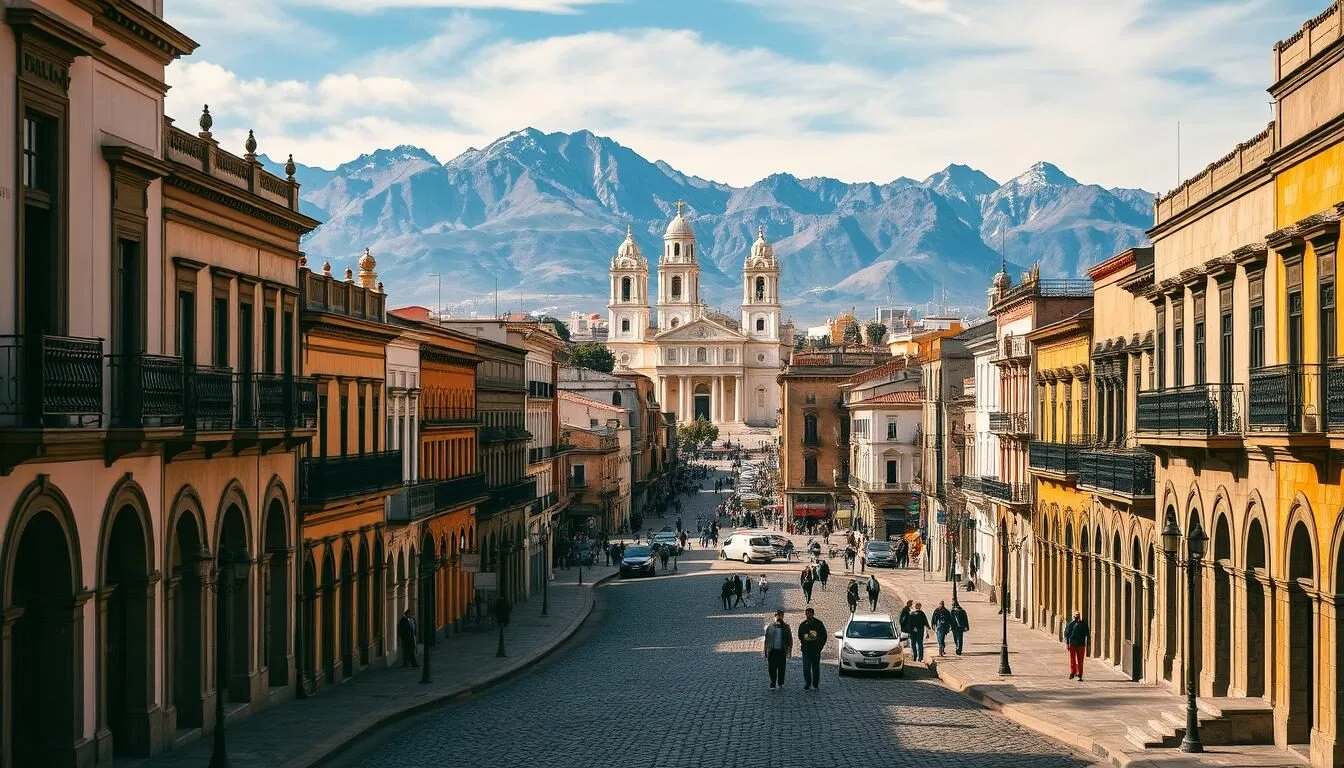✓ Accommodations✓ Flights✓ Rental Cars
You’ve likely heard of Arequipa, the “White City”, known for its stunning sillar volcanic stone architecture. As Peru’s second-largest city, it boasts a rich history, cultural heritage, and breathtaking natural beauty.
Arequipa is a UNESCO World Heritage site, offering a perfect blend of colonial architecture, delicious cuisine, and breathtaking natural surroundings. The city is surrounded by three majestic volcanoes: El Misti, Chachani, and Pichu Pichu, creating a dramatic backdrop for your tour and experience. With approximately 300 days of sunshine per year, Arequipa is a pleasant destination to visit year-round, making it an ideal city break. This comprehensive guide will help you explore the city‘s top attractions and make the most of your visit.
Discovering the White City of Peru
With its stunning white volcanic rock structures, Arequipa earns its nickname, the White City. This architectural marvel is not just a visual treat but also a testament to the city’s rich history and resilience.

Why Arequipa Should Be on Your Peru Itinerary
Arequipa is more than just a city; it’s an experience. The city’s unique blend of indigenous, Spanish, and republican influences makes it a fascinating destination. You should consider visiting Arequipa because of its historical significance, cultural richness, and the opportunity to explore its beautiful landscapes.
The White City is surrounded by majestic volcanoes, offering breathtaking views and a range of outdoor activities. Arequipa’s historic center is a UNESCO World Heritage Site, featuring impressive structures made from sillar, a white volcanic rock.
| Attraction | Description |
|---|---|
| Sillar Architecture | Unique buildings made from white volcanic rock |
| Historic Center | UNESCO World Heritage Site with colonial-era buildings |
| Volcanic Landscapes | Breathtaking views and outdoor activities |
The Unique Sillar Architecture
The architecture in Arequipa is characterized by the use of sillar, a white volcanic rock that has been the primary building material since the colonial period. This petrified volcanic ash has proven durable, helping many buildings survive the region’s frequent earthquakes.
The Ruta del Sillar (Sillar Route) outside the city allows visitors to see quarries and learn about the extraction and carving of this iconic stone. The ornate baroque facades and intricate carvings on many buildings showcase the skilled craftsmanship of local stonemasons throughout the centuries.
Exploring Arequipa’s sillar architecture is like stepping back in time, with its beautiful churches, mansions, and other structures offering a glimpse into the city’s rich history and cultural heritage.
How to Get to Arequipa
Traveling to Arequipa can be a memorable experience, whether you choose to fly or take the bus. Arequipa is a significant tourist destination in southern Peru, known for its rich history, cultural heritage, and stunning natural beauty.
Flying to Arequipa

Flying is the fastest way to reach Arequipa. You can find direct flights to Arequipa from major Peruvian cities like Lima. Rodríguez Ballón International Airport is the city’s main airport, serving both domestic and international flights. When planning your travel to Arequipa, consider flying for a quicker journey.
Taking the Bus to Arequipa

For a more economical option, taking the bus is a viable alternative. Several reputable bus companies, such as Cruz del Sur, Oltursa, and Exclusiva, operate from major cities throughout Peru to Arequipa. The bus journey from Lima to Arequipa takes approximately 17 hours and costs between $20-25, making it a good option for budget travelers. You can break up the long journey with stops at destinations like Huacachina, Paracas, or Nazca. Arequipa has two major bus terminals, Terminal Terrestre and Terminal Terrapuerto, located about 2.5 miles (4 km) from the Plaza de Armas.
Best Time to Visit Arequipa
The best time to visit Arequipa is influenced by the city’s unique weather patterns and vibrant cultural festivals. Understanding these factors can enhance your travel experience.
Weather and Seasons
Arequipa’s climate is generally mild and dry, making it a great destination year-round. However, the city experiences a rainy season from December to March, with the most significant rainfall in February. If you prefer drier conditions, consider visiting between April and November.
Festivals and Events
Arequipa hosts various festivals throughout the year, making it an exciting destination for cultural enthusiasts. You can experience the Fiestas de Arequipa in August, commemorating the city’s founding with parades and food festivals. Other notable events include Carnival in February, Holy Week (Semana Santa) in March/April, and the Wititi dance festival in January. Planning your visit around these events can enrich your experience, but be aware that accommodations may be more expensive, and it’s advisable to book in advance.
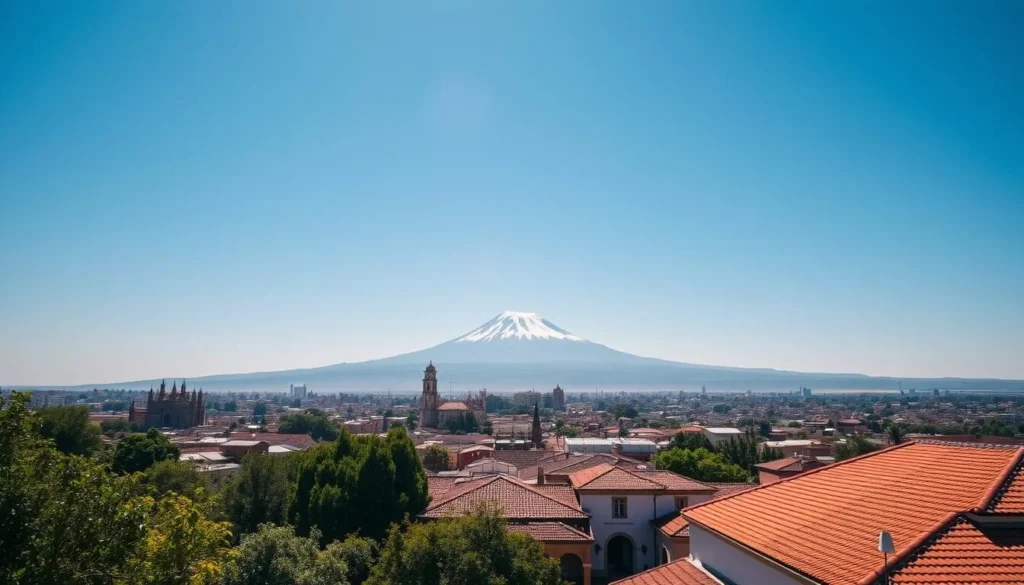
Exploring the Historic Center of Arequipa
The historic center of Arequipa is a treasure trove of architectural marvels and cultural heritage, waiting to be explored. As you wander through the streets, you’ll be struck by the city’s unique blend of indigenous and Spanish influences.
Plaza de Armas: The Heart of the City
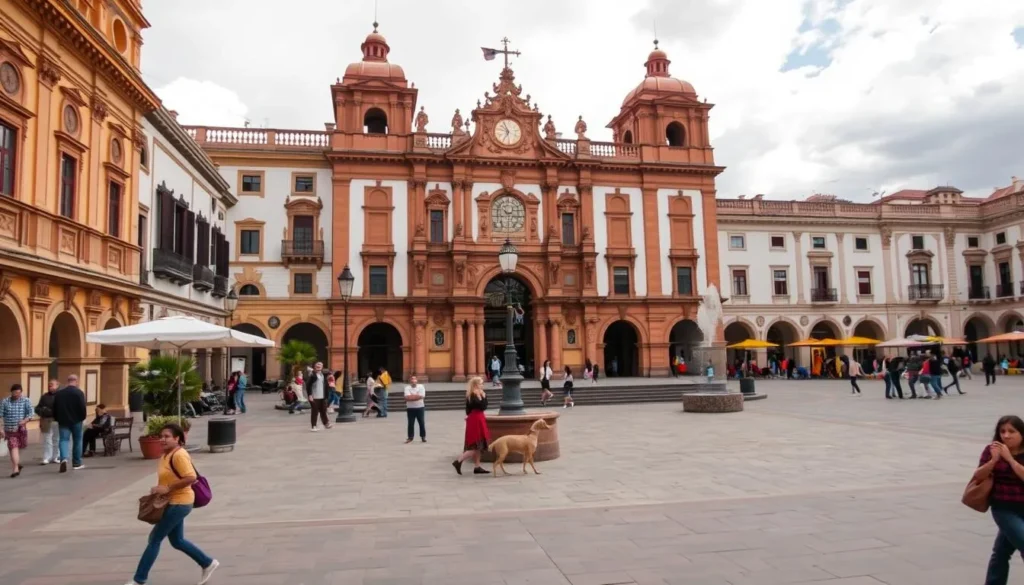
Plaza de Armas is the vibrant heart of Arequipa’s historic center, surrounded by impressive buildings and offering a glimpse into the city’s rich history. The plaza is a great place to start your exploration, with its picturesque gardens, historic monuments, and lively atmosphere. You can take a leisurely stroll around the plaza, admiring the architecture and soaking up the city’s energy.
Basilica Cathedral of Arequipa
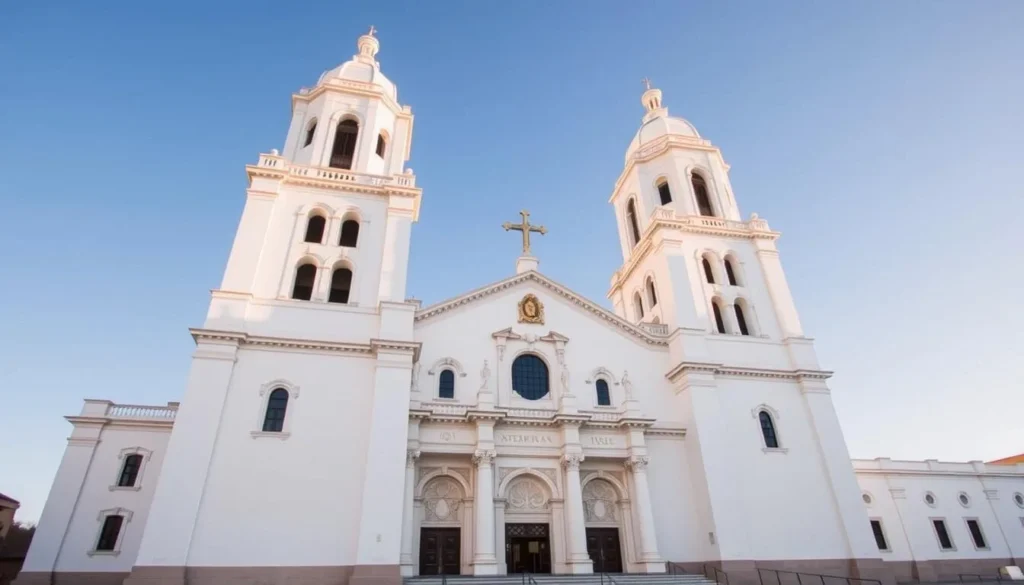
The Basilica Cathedral of Arequipa anchors the northeast corner of Plaza de Armas, boasting an impressive white sillar façade that spans the entire length of one side of the plaza. The cathedral has been rebuilt several times since its original construction in the 1540s due to earthquakes, but its stunning architecture remains intact. Inside, you’ll find an impressive Belgian organ, a neo-Gothic pulpit, and vaulted ceilings. Visitors can tour the cathedral for a small fee, with guided tours available to learn about its history and architectural significance. It’s recommended to visit in the morning when the light is best for photography and crowds are smaller.
The historic center of Arequipa is a city that will captivate your senses, with its rich history, stunning architecture, and vibrant culture. As you explore the Plaza de Armas and Basilica Cathedral, you’ll gain a deeper understanding of the city’s significance and beauty.
Santa Catalina Monastery: A City Within a City
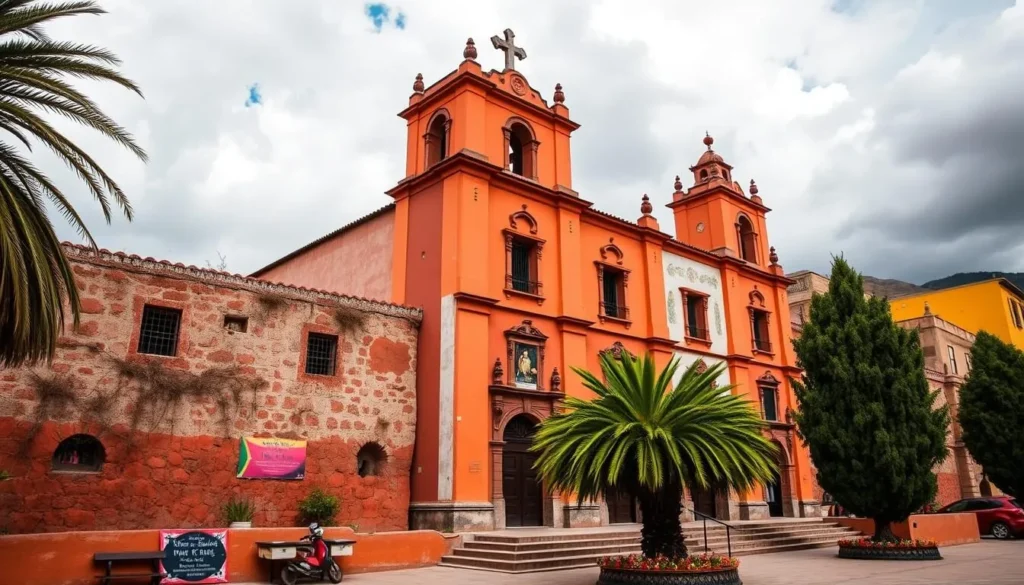
Nestled in the heart of Arequipa, Peru, lies the breathtaking Santa Catalina Monastery, a city within a city that has captivated visitors for centuries. This magnificent complex is not just a historical landmark; it’s an immersive experience that transports you to a different era, offering a unique glimpse into the lives of the nuns who once resided there.
History and Architecture
The Santa Catalina Monastery is renowned for its stunning architecture, which reflects a blend of Spanish and indigenous influences. Founded in 1579, the monastery was home to women from aristocratic families and operated as a self-sufficient city, complete with streets, plazas, and even a kitchen. The complex’s vibrant colors and intricate details make it a fascinating place to explore, with its history and beauty captivating the hearts of all who visit.
Tips for Visiting
To make the most of your visit to the Santa Catalina Monastery, consider the following tips:
- Visit early in the morning (it opens at 9:00 am) or late afternoon to avoid crowds and enjoy better lighting for photography.
- Allow at least 2 hours to fully explore the labyrinthine complex of streets, courtyards, and rooms.
- Hire a guide (available at the entrance) to learn about the fascinating history and daily life of the nuns who lived there.
- Note that the monastery is open daily from 9:00 am to 5:00 pm, with an entrance fee of approximately 40 soles ($12 USD).
- Take a break at the café inside, where you can rest and enjoy refreshments, and browse the small gift shop selling handicrafts made by the current residents.
Arequipa, Peru: Best Things to Do – Top Picks for History Buffs
For history enthusiasts, Arequipa offers a wealth of attractions that provide a glimpse into its rich past. As you explore this charming city, you’ll discover a blend of pre-Columbian history, colonial architecture, and cultural heritage.
Museo Santuarios Andinos and the Ice Maiden Juanita
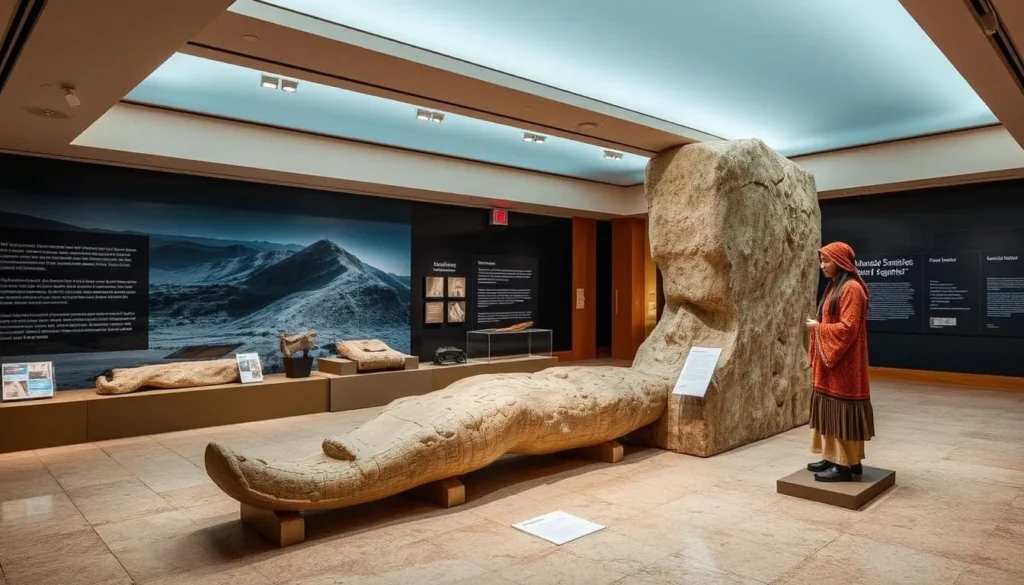
The Museo Santuarios Andinos is a must-visit for anyone interested in pre-Columbian history. This museum is home to the Ice Maiden Juanita, a remarkably well-preserved mummy discovered on the Ampato volcano. The museum provides insight into the Inca civilization and the significance of human sacrifices during that era.
The Ice Maiden Juanita is one of the museum’s most prized exhibits, offering a unique glimpse into the rituals and practices of the Incas. You can learn about the discovery of Juanita and the surrounding archaeological context, making for a fascinating historical experience.
Casa del Moral and Colonial Mansions
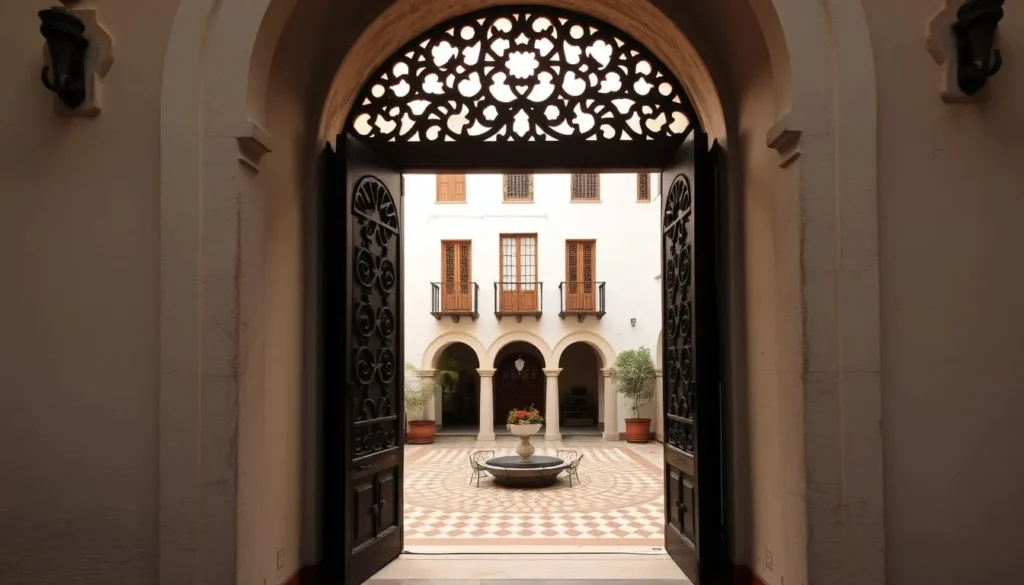
Casa del Moral is one of Arequipa’s best-preserved colonial mansions, named after the ancient mulberry tree in its courtyard. This 18th-century mansion exemplifies the city’s Baroque architectural style with its ornate sillar doorway and spacious rooms arranged around a central patio.
Other notable colonial mansions worth visiting include Casa Tristán del Pozo, Casa de la Moneda, and Casa Ricketts. These historic homes showcase the lifestyle of Arequipa’s elite during the colonial period, featuring thick walls, high ceilings, interior courtyards, and period furniture and artwork. Taking a walking tour that includes several of these historic homes can provide a deeper understanding of the city’s architectural heritage and colonial past.
Best Viewpoints in Arequipa
To truly experience Arequipa, you need to see it from above, where the city’s unique architecture and natural beauty come together. Arequipa is surrounded by stunning landscapes, including the majestic El Misti volcano, which can be admired from various viewpoints throughout the city.
Mirador de Yanahuara
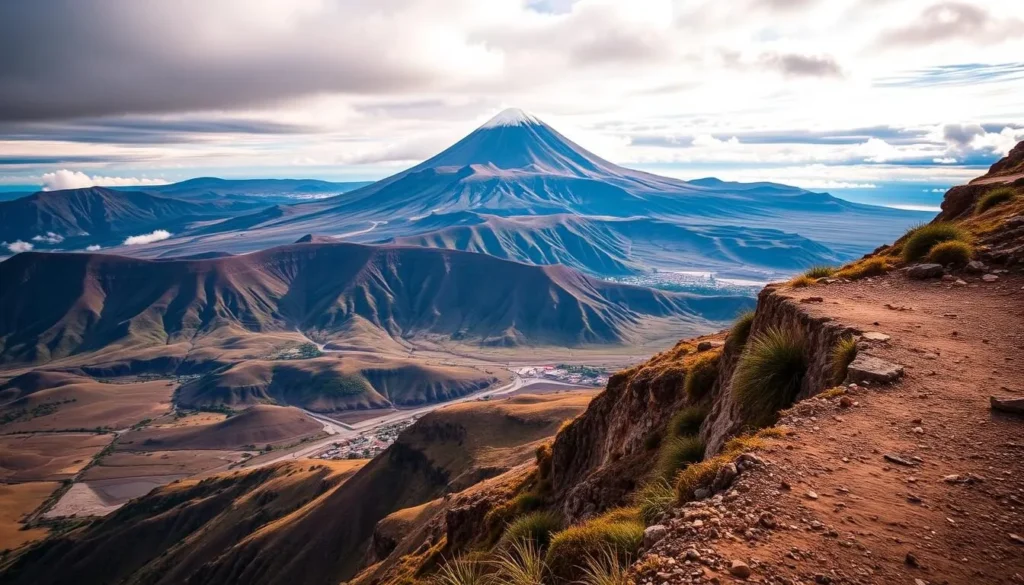
Mirador de Yanahuara is one of the most popular viewpoints in Arequipa, offering breathtaking views of the city and the surrounding volcanoes. The viewpoint is adorned with intricate stone arches and provides a picturesque frame for the stunning landscapes.
Carmen Alto Viewpoint
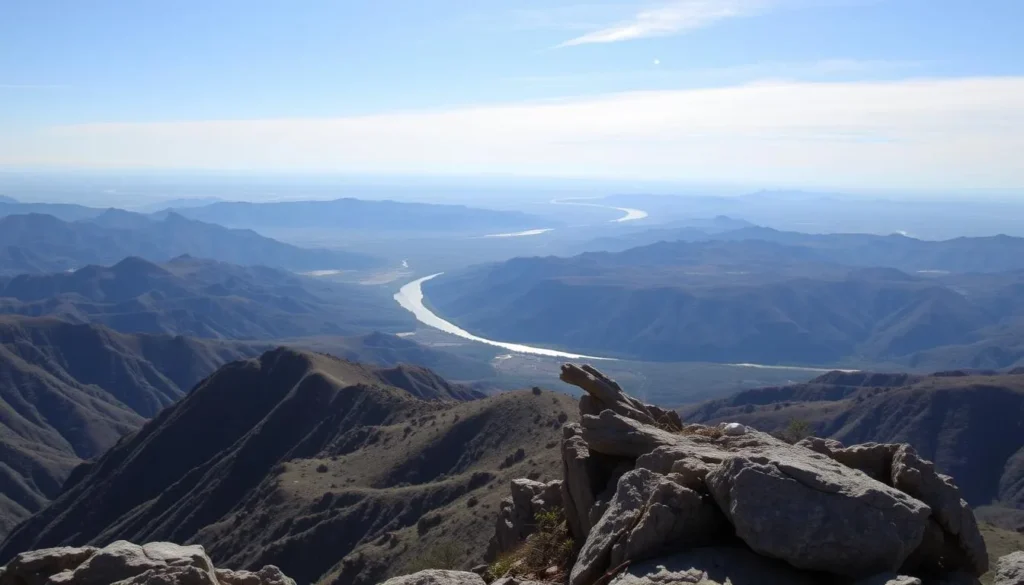
For a different perspective on Arequipa, visit the Carmen Alto viewpoint in the Cayma district. This viewpoint offers panoramic views of the city, the surrounding agricultural terraces (campiña), and the Chili River valley. Unlike Yanahuara, Carmen Alto is less crowded, providing a more authentic experience. It’s a favorite among locals, especially young couples, who come to enjoy the romantic setting with El Misti volcano as a backdrop.
You can combine your visit to Carmen Alto with exploring the Cayma district, which features a pretty main plaza and a uniquely shaped church. The viewpoint is accessible by taxi or as part of a city tour and is free to visit at any time of day.
Culinary Experiences in Arequipa
As you explore Arequipa, you’ll discover a city that’s passionate about its food, with a blend of indigenous and Spanish influences. The city’s culinary scene is characterized by its traditional picanterías, which are a must-visit for any food enthusiast.
Traditional Picanterías to Try
Arequipa’s picanterías are renowned for their delicious local cuisine. Some of the best picanterías to try include those that serve authentic Arequipeñan dishes made with fresh ingredients and traditional cooking methods. When visiting a picantería, be sure to try their signature dishes, such as rocoto relleno, which is a stuffed spicy pepper filled with minced meat, vegetables, and topped with melted cheese. Be warned, it can be quite spicy!
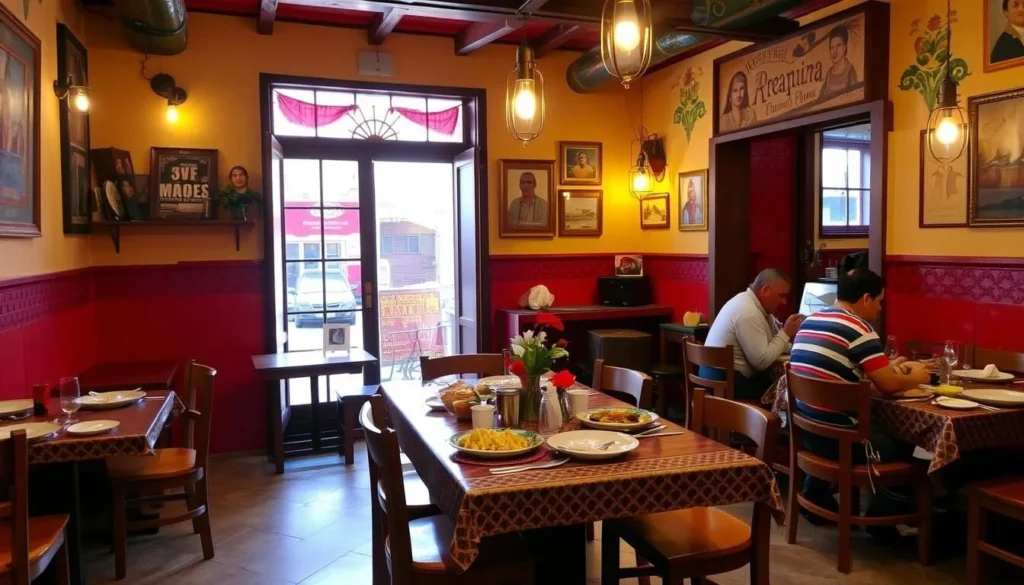
Must-Try Arequipeñan Dishes
Arequipa’s culinary identity is reflected in its diverse range of traditional dishes. Some must-try specialties include chupe de camarones (prawn chowder), ocopa arequipeña (potatoes in a creamy, spicy sauce), and adobo (pork marinated in chicha and spices). You should also try traditional appetizers like papa a la huancaína (potatoes in a creamy cheese sauce) and causa (layered potato dish), which showcase Peru’s diverse potato varieties.
For dessert, don’t miss queso helado, Arequipa’s famous cinnamon-flavored frozen treat that, despite its name, contains no cheese. To accompany your meal, try chicha de jora (fermented corn beer) or macerados (fruit-infused pisco), which are traditional beverages that complement the local cuisine perfectly.
Local Markets and Shopping
When exploring Arequipa, you’ll discover that local markets and shopping experiences are an integral part of the city’s vibrant culture. The city offers a variety of shopping options, from traditional markets to specialty stores, where you can find unique souvenirs and local products.
Mercado San Camilo
Mercado San Camilo is one of Arequipa’s most famous markets, offering a wide range of local produce, handicrafts, and traditional food. As you walk through the market, you’ll be immersed in the sights, sounds, and smells of southern Peru. You can sample local delicacies, buy fresh produce, and shop for handmade crafts.
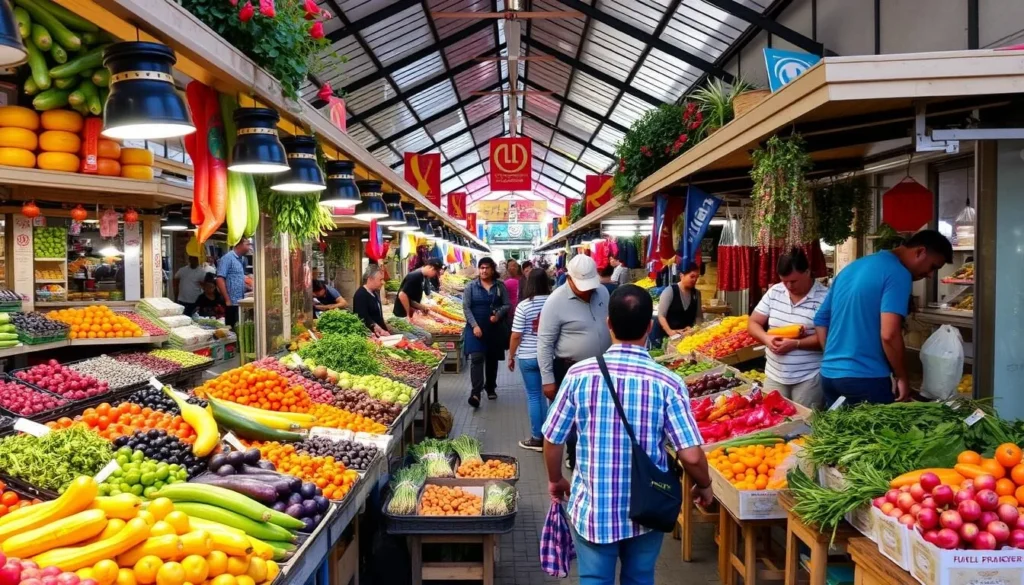
Mundo Alpaca: All About Alpaca Textiles
For a unique shopping experience, visit Mundo Alpaca, an educational center dedicated to alpaca textiles. Here, you can learn about the entire process of creating alpaca products, from shearing to finished goods. The center features live alpacas and llamas, traditional weaving demonstrations, and a museum showcasing pre-Columbian textiles.
You’ll have the opportunity to purchase high-quality alpaca products, including sweaters, scarves, and blankets, made from genuine alpaca wool. Mundo Alpaca is located near the San Lázaro neighborhood, making it a perfect stop before shopping for alpaca souvenirs elsewhere in the city.

Day Trip to Colca Canyon
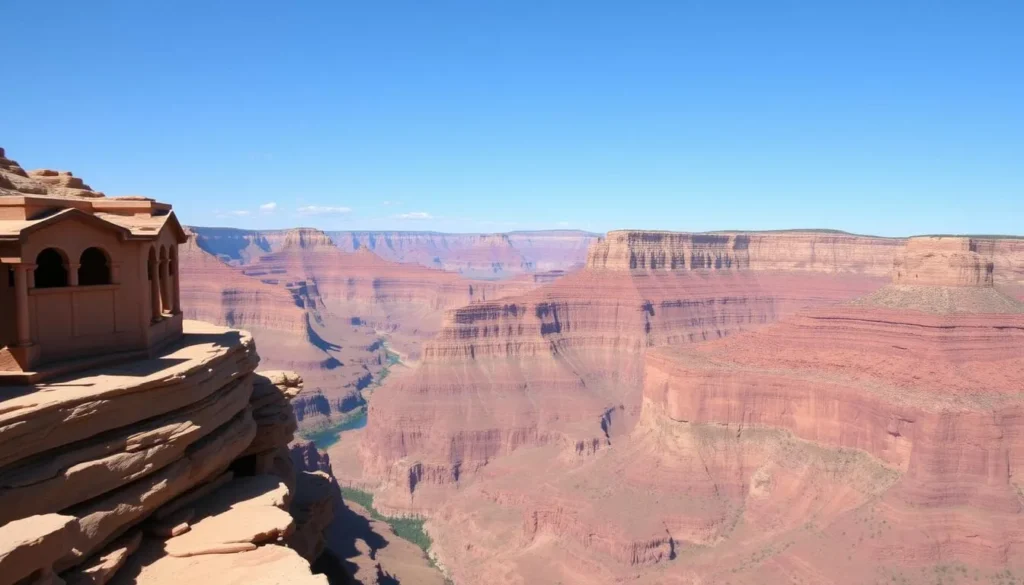
Embark on a day trip to Colca Canyon, one of the deepest canyons in the world, and experience the rich cultural heritage of the region. Colca Canyon is a marvel that offers more than just stunning views; it’s a journey into the heart of Andean culture and natural beauty.
Spotting Andean Condors at Cruz del Condor
One of the highlights of your day trip will be visiting Cruz del Condor, a renowned viewpoint where you can witness the majestic Andean condors in flight. The condors, with their impressive wingspans, are a spectacle that will leave you in awe. Early morning is typically the best time to see these magnificent creatures.
Hot Springs and Traditional Villages
After taking in the views and spotting condors, your Colca Canyon tour continues with a visit to the natural hot springs in Chivay and La Calera. Soaking in these mineral-rich waters is a perfect way to rejuvenate. You’ll also explore traditional villages like Yanque, Maca, and Coporaque, where locals maintain their ancestral customs and agricultural practices.
The Colca Valley is also home to pre-Inca agricultural terraces that have been in use for over 1,500 years, showcasing the ingenuity of the region’s ancient inhabitants. Visiting local markets in these villages offers the opportunity to purchase authentic, handcrafted textiles featuring unique embroidery patterns.
While a day trip from Arequipa is feasible, consider extending your visit to two or three days to fully immerse yourself in the beauty and culture of Colca Canyon.
Hiking El Misti Volcano
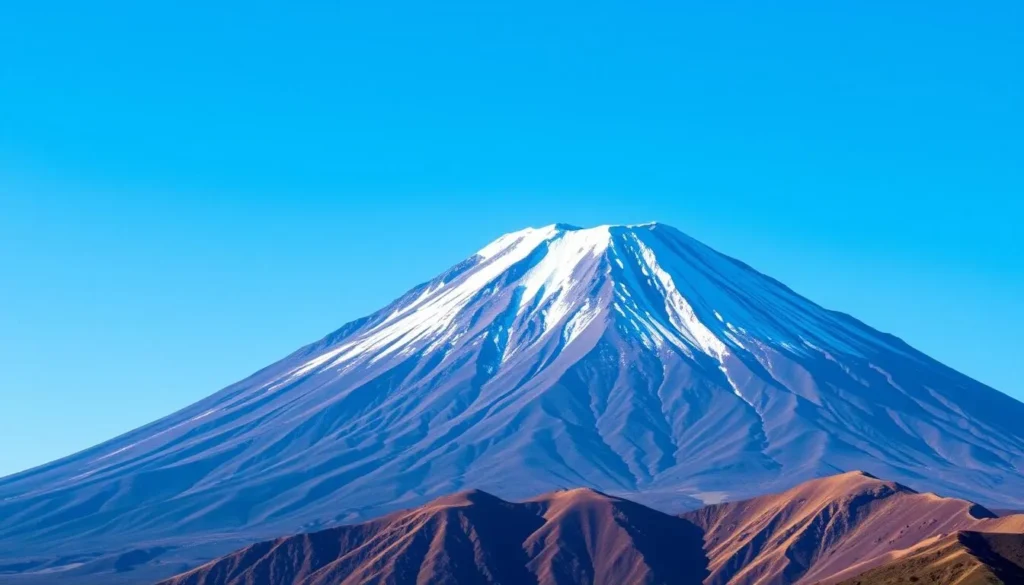
For adventure-seekers, hiking El Misti Volcano is an unforgettable experience near Arequipa, Peru. This active volcano stands tall, offering a challenging yet rewarding hike for outdoor enthusiasts. As you plan your tour, understanding the climb and what to expect is crucial.
Preparing for the Climb
Preparing for the El Misti Volcano hike involves understanding the typical two-day climbing itinerary. You start with a morning departure from Arequipa, followed by a drive to the trailhead. The initial day involves a 4-5 hour hike to base camp at around 15,000 feet (4,600 meters). It’s essential to acclimate to the high altitude to avoid potential sickness.
Altitude sickness is a significant concern; thus, climbers should be prepared with appropriate gear and guides.
What to Expect on the Trail
On the summit day, you begin your ascent around 2:00-3:00 am, facing a challenging 5-6 hour climb to reach the crater rim by mid-morning. The views from the summit are breathtaking, with panoramas of neighboring volcanoes like Chachani and Pichu Pichu, the white city of Arequipa, and on clear days, even the Pacific Ocean.
Be prepared for cold temperatures, especially at night and early morning, and the difficult descent through loose volcanic sand. The best time for climbing El Misti is during the dry season (May to November), with July to September offering the most stable weather conditions.
Salinas y Aguada Blanca National Reserve
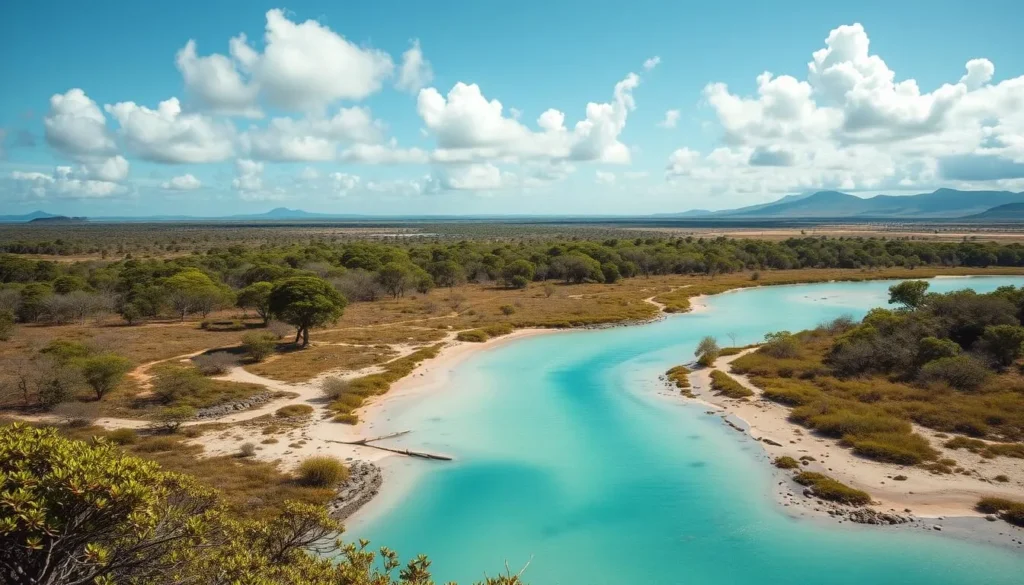
As one of Peru’s most stunning natural areas, the Salinas y Aguada Blanca National Reserve is a highlight of any trip to the region. This vast protected area is known for its diverse landscapes, ranging from high-altitude lakes to volcanic peaks.
Wildlife and Landscapes
The reserve is home to a variety of wildlife, including flamingos at the Salinas Lake and vicuñas grazing in the Pampa Cañahuas. The Patapampa viewpoint, or “Mirador de los Volcanes,” offers breathtaking views of up to eight volcanoes on a clear day. The unique yareta plants, which can be over 3,000 years old, add to the reserve’s fascinating flora.
Photography Opportunities
For photographers, the Salinas y Aguada Blanca National Reserve is a paradise. The Salinas Lake, with its flamingo populations against a backdrop of volcanoes, is particularly photogenic during early morning or late afternoon. Pampa Cañahuas is ideal for capturing images of vicuñas. To make the most of your photography experience, bring a variety of lenses, including telephoto and wide-angle, as well as polarizing filters to enhance the sky’s intense blue.
Visiting the Salinas y Aguada Blanca National Reserve is an unforgettable experience, offering a mix of natural beauty, diverse wildlife, and stunning photography opportunities. Whether you’re a nature lover, photographer, or simply looking to explore Peru’s great outdoors, this reserve is a must-visit destination.
Where to Stay in Arequipa
From luxury hotels to budget-friendly hostels, Arequipa has something for everyone. The city offers a range of accommodations to suit different budgets and preferences, ensuring a comfortable stay for visitors.
Best Neighborhoods
The historic center is a popular area to stay, with many hotels and hostels located around the Plaza de Armas. This area provides easy access to major attractions and a vibrant atmosphere. Other neighborhoods, such as Yanahuara and Cayma, offer a more local experience and are still within reach of the city’s main sights.
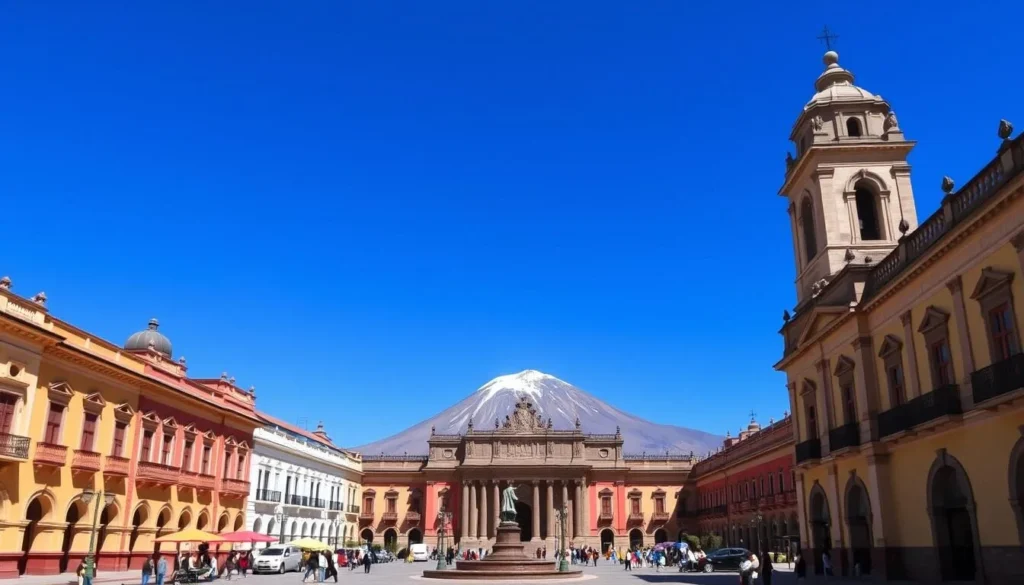
Accommodation Options for Every Budget
Arequipa caters to all budgets with its diverse accommodation options. Luxury seekers can enjoy hotels like Casa Andina Premium Arequipa, housed in a restored 18th-century colonial mansion, and CIRQA, an exclusive boutique hotel in a former monastery.
For mid-range travelers, options like Casona Plaza Hotel, Palla Boutique Hotel, and Casa Andina Select offer good value with comfortable rooms and convenient locations. Budget-conscious travelers can consider Mango Hostel B&B on the Plaza de Armas or Qasa by Nomad, which offers both private rooms and dormitories.
For a more immersive cultural experience, homestay options are available, allowing visitors to live with local families and enjoy home-cooked meals. It’s advisable to book accommodations well in advance, especially during peak season (June-August) and during festival periods like the anniversary celebrations in August.
Getting Around Arequipa
To explore Arequipa efficiently, you’ll need to know the best ways to get around the city. Arequipa is a city that is relatively easy to navigate, with various transportation options available.
Public Transportation
Public transportation in Arequipa includes buses and minibuses that cover most areas of the city. While it’s an affordable option, with fares typically ranging from 1 to 2 soles, it might not be the most convenient for tourists due to the lack of English signage and potentially crowded conditions.
- Bus routes cover major areas, but schedules can be irregular.
- Minibuses are more frequent but can be confusing for non-Spanish speakers.
Taxis and Ride-Sharing Apps
Taxis are a more convenient option, especially for destinations outside the historic center or when carrying luggage. Official taxis in Arequipa are usually small sedans painted in white and yellow. Here are some tips for using taxis:
- Fares within the city are generally inexpensive, ranging from 5 to 10 soles for most trips.
- It’s advisable to negotiate and agree on the fare before entering the taxi.
- Ride-sharing apps like Uber and InDriver operate in Arequipa, offering a convenient alternative, especially for those who don’t speak Spanish.
For day trips outside the city, such as to Colca Canyon or El Misti, hiring a tour with transportation included is often the most practical option, as public transportation to these areas can be limited.
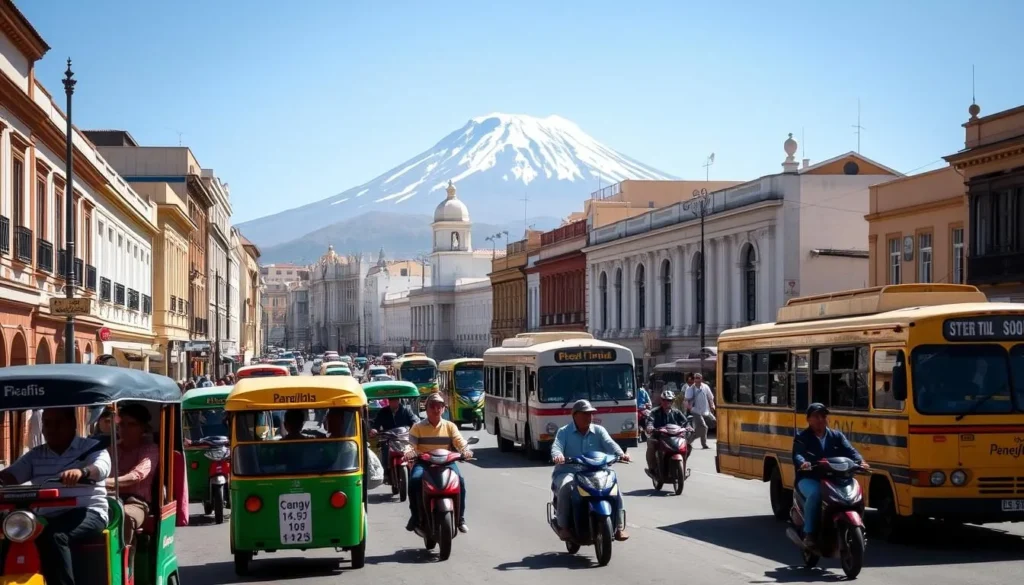
Practical Tips for Visiting Arequipa
As you prepare for your trip to Arequipa, here are some practical tips to ensure a smooth and enjoyable journey. You’ll need to consider a few key factors to make the most of your visit.
Dealing with Altitude
Arequipa is situated at a high altitude, so it’s crucial to be aware of the potential effects of altitude sickness. To acclimate, take it easy for the first day or two, and consider drinking plenty of water to stay hydrated. If you’re sensitive to altitude, you may want to consult your doctor about any necessary precautions or medication you’ll need.
Safety and Local Customs
Arequipa is generally considered one of the safer cities in Peru, with violent crime against tourists being rare. However, it’s still important to take normal precautions to ensure your safety. Be vigilant in crowded areas like markets and bus terminals, where pickpocketing can occur. Avoid displaying valuable items or large amounts of cash. When visiting churches and religious sites, dress modestly with shoulders and knees covered out of respect. Additionally, be aware of local customs such as tipping practices: 10% is standard in restaurants if the service charge isn’t already included, while taxi drivers don’t typically expect tips. Learning a few basic Spanish phrases will also enhance your experience, as Spanish is the primary language spoken in Arequipa.
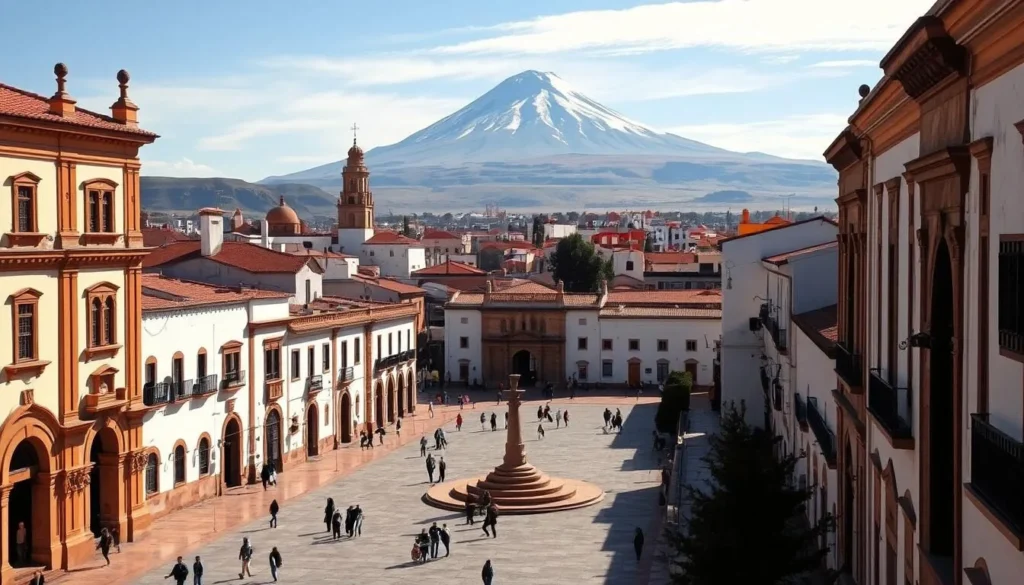
Conclusion: Why Arequipa Deserves More Than a Quick Visit
As you explore the many facets of Arequipa, from its stunning white sillar architecture to the majestic landscapes of Colca Canyon, you’ll discover why it’s a must-visit destination. Arequipa offers a perfect blend of cultural attractions, natural wonders, culinary experiences, and authentic Peruvian life, making it an ideal location for travelers seeking a comprehensive Peruvian experience.
While many travelers allocate only 1-2 days for Arequipa on their Peru itinerary, the city and surrounding region deserve at least 3-5 days to fully appreciate. This allows you to soak in the relaxed atmosphere, engage deeply with local culture, and explore the numerous attractions without feeling rushed.
One of the key advantages of visiting Arequipa is that it provides a more relaxed and less touristy experience compared to Cusco or Lima. You can wander through the historic center, visit the Santa Catalina Monastery, and enjoy the local cuisine at your own pace. The city’s surroundings, including Colca Canyon and El Misti volcano, offer breathtaking natural beauty and opportunities for hiking, wildlife spotting, and relaxation in hot springs.
To make the most of your visit, consider using Arequipa as a base for exploring the surrounding region. Less-visited gems like Cotahuasi Canyon, the world’s deepest canyon, and the Salinas y Aguada Blanca National Reserve are within reach. These destinations offer a chance to experience the authentic beauty and culture of Peru.
In conclusion, Arequipa is a city that should be on every traveler’s Peru itinerary. With its unique blend of culture, history, and natural beauty, it’s an unexpected highlight of any trip to Peru. So, take your time to visit Arequipa, explore its many attractions, and discover the things you can see and experience in this incredible city.
—
The above is subject to change.
Check back often to TRAVEL.COM for the latest travel tips and deals.
